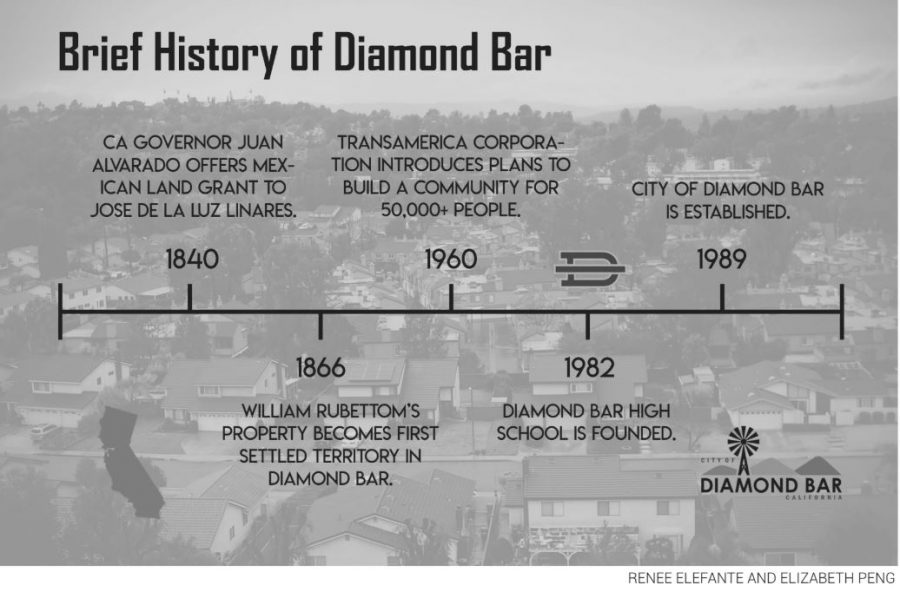Diamond Bar, from farmland to suburb
While the city celebrates its 30th anniversary, the community knows more than 170 years of history.
From raising cattle to providing homes for thousands of residents, the city of Diamond Bar has evolved through the decades to mark its 30th anniversary this year.
According to “Images of America: Diamond Bar,” Diamond Bar’s history began on March 30, 1840, when California Gov. Juan Alvarado offered a Mexican land grant to Jose de la Luz Linares. Alvarado’s land consisted of the yet unnamed Diamond Bar, Brea Canyon, and east Walnut Valley. Linares added the new land he received to the plot of land he had already owned and named the collective territory Rancho Los Nogales. Linares passed away in 1847, and his land was eventually sold to Ricardo Vejar.
During the 1860s, ranchers faced problems arising from federal intervention of old California land grants. Vejar started with 10,000 acres of land and was left with only 464 acres after the investigation. In addition, the California droughts forced landowners to invest in food to feed their cattle. Most ranchers had to borrow money because the loss of land led to debt.
Vejar eventually sold Rancho Los Nogales for $30,000 to rancher Louis Phillips, who owned 12,000 acres of land, including this purchase. Phillips then sold a portion of this ranch in 1866 to William Rubettom, who opened a tavern and an overland stage station (where tired horses are exchanged for energetic horses) called “Spadra.” This became the first settled territory in the area of Diamond Bar, and it is currently the area near the Route 57 and Pomona Boulevard.
Rancho Los Nogales was sold again, but this time in allotments to many landowners. In 1918, Frederich E. Lewis bought and reassembled most of Rancho Los Nogales and established the Diamond Bar Ranch. The ranch was sold in 1943 to the Bartholome family, who raised cattle on the land for 13 years.
In 1960, the Transamerica Corporation introduced plans to build a community and create homes for more than 50,000 people. By 1970, the Walnut Valley Unified School District was created and by 1982, Diamond Bar High School was established. Diamond Bar was officially incorporated as a city on April 18, 1989.
The demographics of Diamond Bar have also changed drastically. According to the U.S. Census estimates, the population rose from 10,576 in 1970 to 28,045 in 1980 to 56,287 in 2000. Currently, the population fluctuates between the high 55,000s and low 56,000. Roughly over the past two decades, the Asian population increased from 43 percent to 55 percent and the Caucasian population decreased from 41 percent to 29 percent.
According to Mayor Carol Herrera, the city council has been proactive about asking residents for ways to improve upon what the city is today.
“As mayor, [the] staff and I are constantly asking our residents about what services they like and what would they like to see,” Herrera said via email. “I am working with the rest of the council and staff to find funding to improve the traffic on our streets.”
City expansion is limited by the hillsides of Diamond Bar. Furthermore, with competing neighboring cities, stores prefer to be located in Brea or Chino Hills. Regardless, the council has been working on improving the business in Diamond Bar.
“Our latest achievement is the Spouts Shopping Center,” Herrera said. “We worked with the shopping center owner for years to pull all those stores together.”
On April 13, the annual city birthday party was held at Pantera Park. The event had many activities, including rides, carnival games and activity booths. Singers and dancers performed on the stage throughout the day.
Your donation will support the student journalists of Diamond Bar High School. Your contribution will allow us to purchase equipment and cover our annual website hosting costs.



